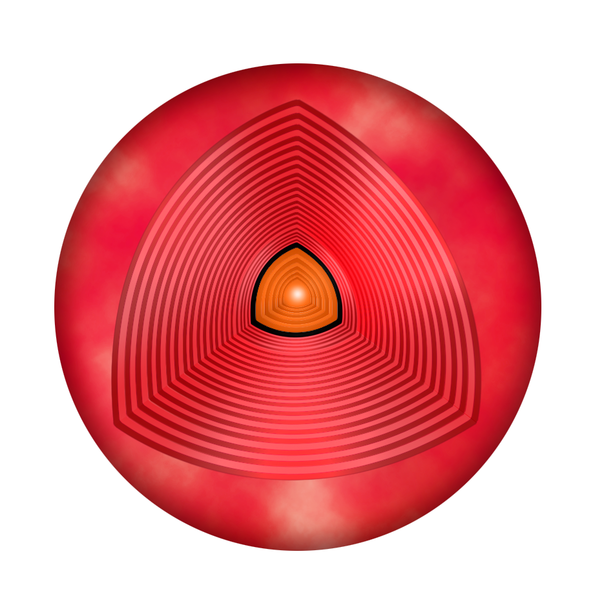30.06.2019
A group of red giants discovered four years ago seems to be old and young at the same time. Scientists now prove that they are indeed old – and a result of star mergers.

Towards the end of their lifetime, main sequence stars, such as the Sun, turn into red giants. The layer in which massive plasma flows transport hot material to surface then expands to the core. In this way, nuclear material can reach the surface of the star - and allows for an indirect view into the interior.
Main sequence star, red giant, white dwarf - in the course of their lifespan covering millions or even billions of years, stars pass through different stages of stellar evolution - all differing greatly in appearance. Yet, stars do not reveal their ages easily, at least not at first glance. The duration of each phase differs too greatly from star to star. With deeper look, however, researchers can reconstruct the star’s life story. Various methods now make it possible to reliably determine the age of a star.
But there are tricky cases: Four years ago, two groups of researchers led by the Leibniz Institute for Astrophysics and the Max Planck Institute for Astronomy discovered confusing red giant stars. The results of different age measurements diverged by a full four billion years. "The stars seemed to be old and young at the same time," Dr. Saskia Hekker from MPS and the University of Aarhus in Denmark, who was part of both discovery teams at the time and is now the first author of the new study, recalls. "This apparent paradox has intrigued me ever since”, she adds. Together with her colleague Dr. Jennifer A. Johnson from Ohio State University, she has now solved the mystery of some of these stars. Both researchers are convinced that the strange stars only feign youthfulness.
The red giants’ building material points to an ancient age of more than 10 billion years. The stars contain comparatively little iron, an element that in the course of galactic evolution was produced only slowly. Old stars therefore contain little iron compared to other substances such as magnesium, silicon, and calcium, while young stars contain more. In order to determine these elements’ ratios scientists split the light from the respective star into its individual wavelengths. In this so-called spectrum, each element found within the star leaves a characteristic fingerprint. Another method of age determination looks at the oscillations of a star. With methods of asteroseismology it is possible to then deduce the star’s mass.
Since particularly high temperatures prevail inside heavy stars, their fuel burns comparatively quickly. Heavy stars therefore have a much shorter life expectancy than low-mass ones. The red giants in question proved to be true heavyweights. The asteroseismic method therefore yields ages of less than 6 billion years.
The new investigation now solves this contradiction. The researchers were able to show that some of the stars look back on an extremely eventful past. "Some of the mysterious stars must have merged with others during or after their transformation into red giants," Dr. Saskia Hekker summarizes the results. "Their large mass is not an original property and therefore not suitable for age determination," she adds. "The stars are indeed old.”
Key to these results were the amounts of carbon, nitrogen, and oxygen found at the surface of the stars. These elements allow for an indirect look into the stellar interior. When so-called main sequence stars, i.e. those in the same stage of development as the Sun, turn into red giants towards the end of their life, their inner workings change: carbon, nitrogen, and oxygen, which are formed in the nucleus, can be dredged up to the surface in huge plasma currents and can then be detected. Depending on how hot - and thus massive - the star in question is, the elements can be found in different ratios.
In some of their measurements, the researchers found values typical for low-mass stars. "Before they became red giants, these stars must have been comparatively light," concludes Dr. Jennifer Johnson from the Ohio State University. "Their current high mass can be explained by the fact that as red giants they have merged with other stars," she argues.
The explanation does not apply to all the stars studied. For some, the high mass determined years ago by means of asteroseismology coincides well with the presence of carbon, nitrogen, and oxygen at their surface. "These stars could have merged with others at an earlier stage of development before nuclear material was swirled to the surface," says Hekker. A final explanation is still pending.
The new study also offers a new approach to the question of how often stars collide and merge as a result. Red giants with such a turbulent past could now be tracked down via the detour of age determination.
Quelle: MAX-PLANCK-GESELLSCHAFT, MÜNCHEN
